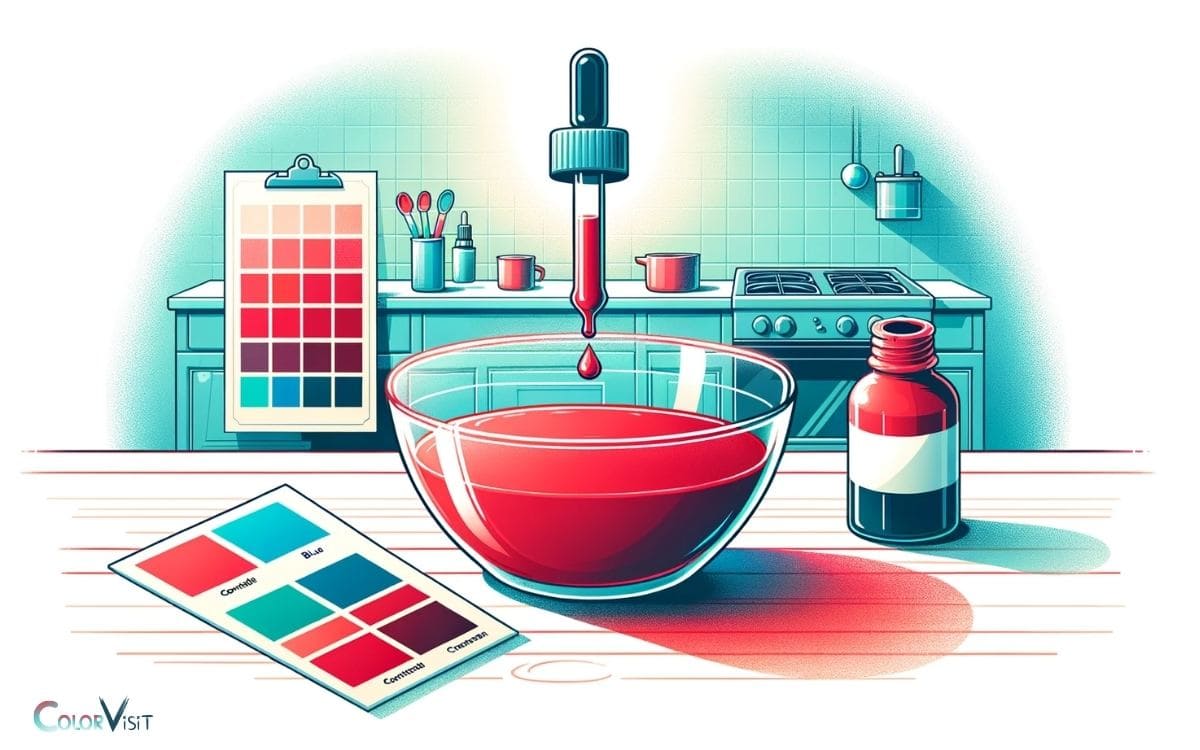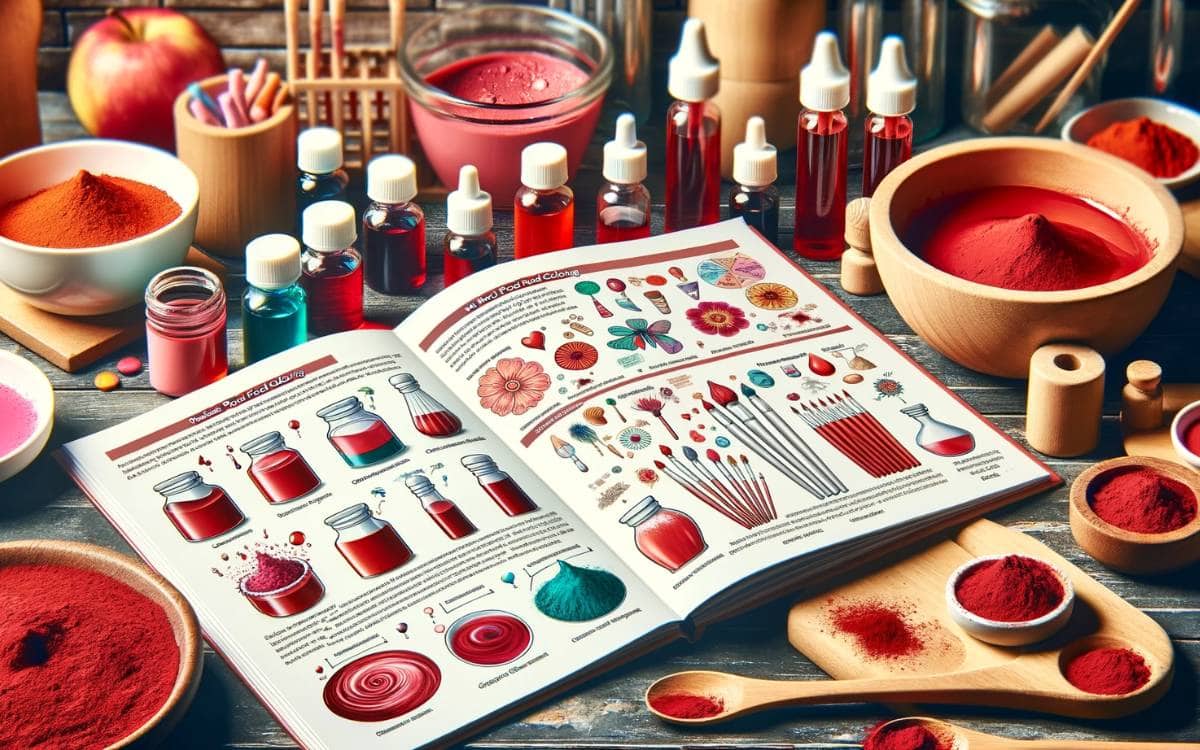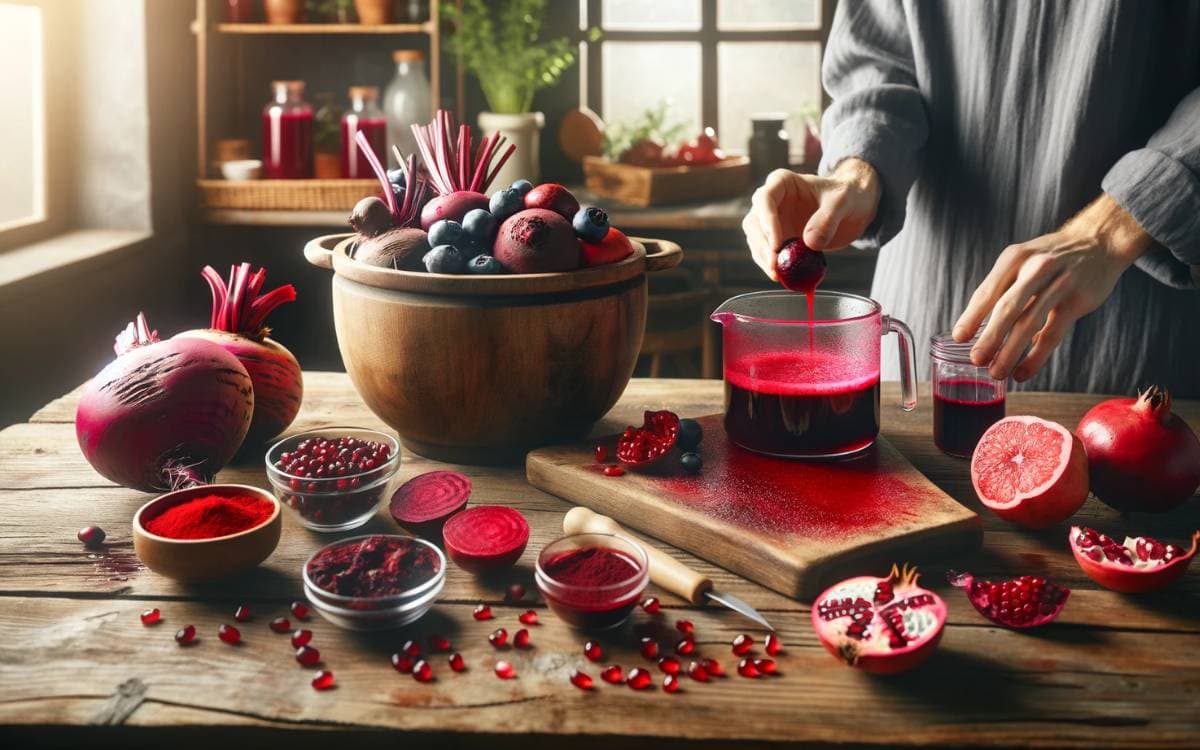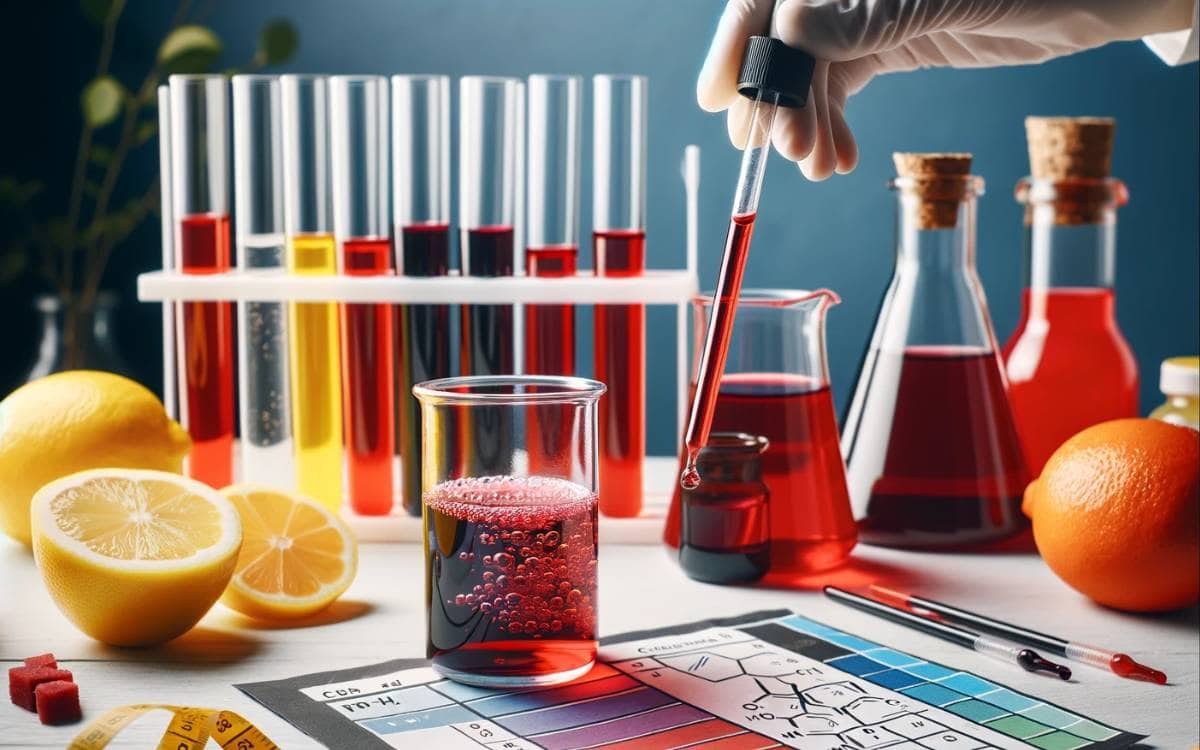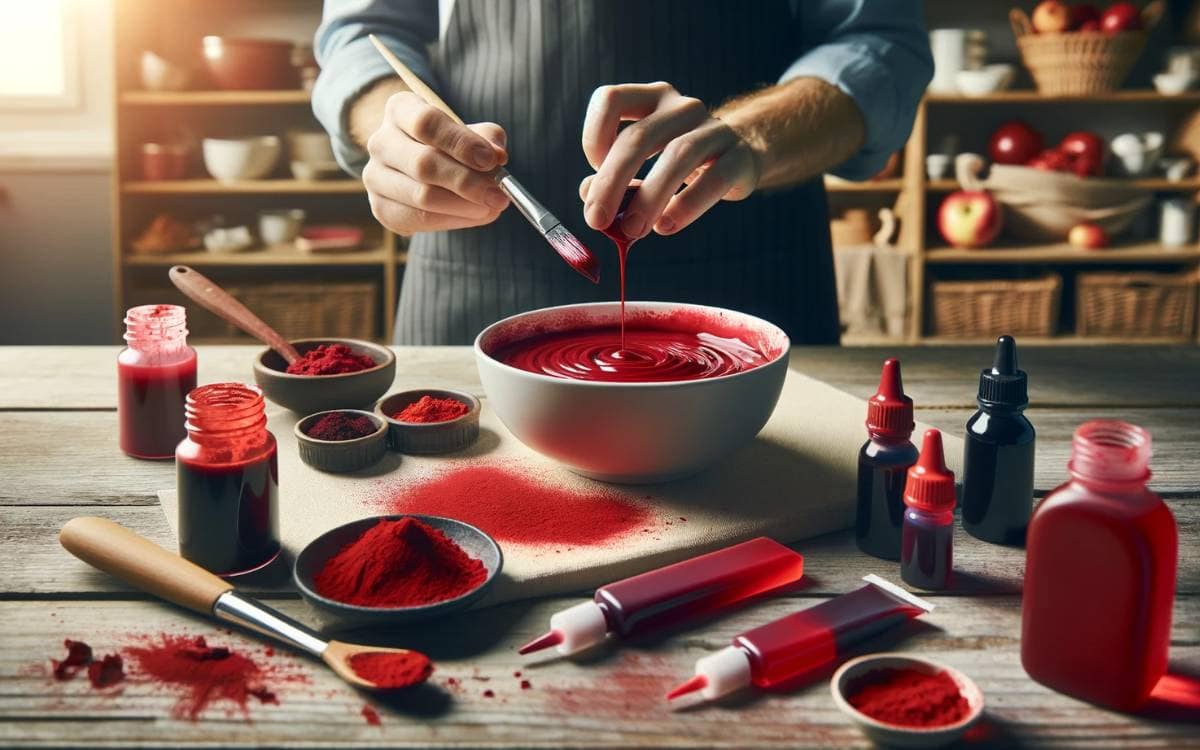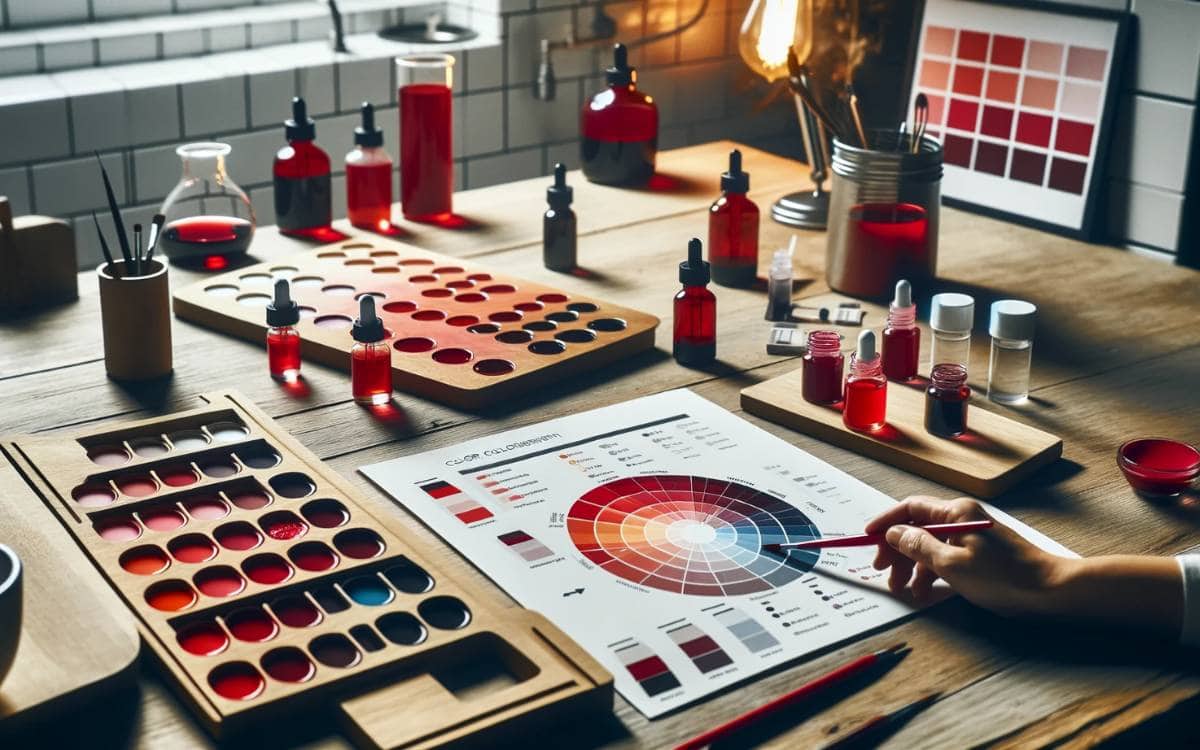How to Make Red Food Coloring Darker? Proven Guide!
To make red food coloring darker, you can follow several methods, including adding more coloring, using concentrated gel or paste colors.
When attempting to deepen the shade of red food coloring, there are a few key techniques to consider:
Our tips guide you through the process of enriching the color, ensuring your dishes are as visually stunning as they are delicious.
Key Takeaway
Understanding the Basics of Red Food Coloring
Red food coloring is a concentrated liquid or powder used to impart a red hue to various food products.
- It is commonly derived from synthetic sources such as FD&C Red 40, which is a petroleum-based product.
- This type of food coloring is highly concentrated, allowing for vibrant and consistent coloring of food items.
- Red food coloring is extensively used in the food industry to enhance the visual appeal of products and create a specific aesthetic appeal.
- Its high concentration also ensures that only a small amount is needed to achieve the desired color intensity, making it a cost-effective option for manufacturers.
Understanding the composition and properties of red food coloring is essential in exploring alternative natural sources to achieve a darker and more intense red color in food products.
Utilizing Natural Ingredients to Enhance Red Color
Natural ingredients can be harnessed to intensify the red color of food products. Beet juice can be used to deepen the red hue of food coloring.
- The natural pigment betalain, found in beets, is responsible for their intense red color and can be extracted to enhance the vibrancy of red food coloring.
- Similarly, pomegranate juice contains anthocyanins, which can also be utilized to intensify the red tones in food products.
- Additionally, utilizing natural sources such as hibiscus flowers, raspberries, and cranberries can provide a rich and deeper red hue to food coloring.
These natural ingredients not only enhance the color but also offer the added benefit of being free from synthetic additives, appealing to consumers seeking natural and innovative solutions for food coloring.
Experimenting With Acidic Additives for Darker Hue
Utilizing a small amount of acidic additives can significantly deepen the red hue of food coloring, providing a darker and more intense color for various culinary applications.
- When experimenting with acidic additives such as lemon juice, vinegar, or citric acid, it’s essential to start with a small quantity and gradually increase it to achieve the desired shade without compromising the taste of the final product.
- The acidic nature of these additives helps stabilize the anthocyanin pigments, intensifying the red color.
- Additionally, the use of acidic additives can also enhance the shelf life of the food coloring.
It’s important to note that while experimenting with acidic additives, it’s crucial to consider the overall flavor profile of the dish and adjust the other ingredients accordingly to maintain a harmonious balance.
Achieving Depth Through Concentrated Red Dyes
When using concentrated red dyes to deepen the color of food coloring, it is crucial to consider the stability and intensity of the resulting hue, building upon the principles discussed in the previous section.
- Concentrated red dyes, such as those containing carmine or erythrosine, offer a potent means of achieving a darker and more vibrant red color in food coloring.
- These dyes are highly concentrated, allowing for smaller quantities to be used while still achieving the desired depth of color.
- However, it is important to exercise caution and precision when incorporating concentrated red dyes, as their intense pigmentation can easily overwhelm the desired shade.
- Understanding the optimal concentration and interaction with other ingredients is essential for achieving the desired deep red hue in food coloring.
Tips for Balancing and Adjusting Color Intensity
To achieve the desired depth of color in red food coloring, it is essential to carefully balance and adjust the color intensity using precise measurements and techniques.
- When seeking a darker red hue, start by adding small amounts of concentrated red dye to the base mixture and then thoroughly mix.
- It’s crucial to add the dye incrementally to avoid over-saturating the mixture, which can result in an overly intense or artificial color.
- Additionally, consider using complementary colors to adjust the hue and intensity, such as adding a small amount of green to deepen the red.
Always keep detailed records of the amounts and types of colorants used to replicate successful results.
Conclusion
Achieving a darker red food coloring can be accomplished through the use of natural ingredients, acidic additives, and concentrated red dyes.
By understanding the basics of red food coloring and experimenting with different techniques, it is possible to enhance the color intensity and achieve a deeper hue.
With the right balance and adjustments, the desired dark red color can be achieved to elevate the visual appeal of culinary creations.
